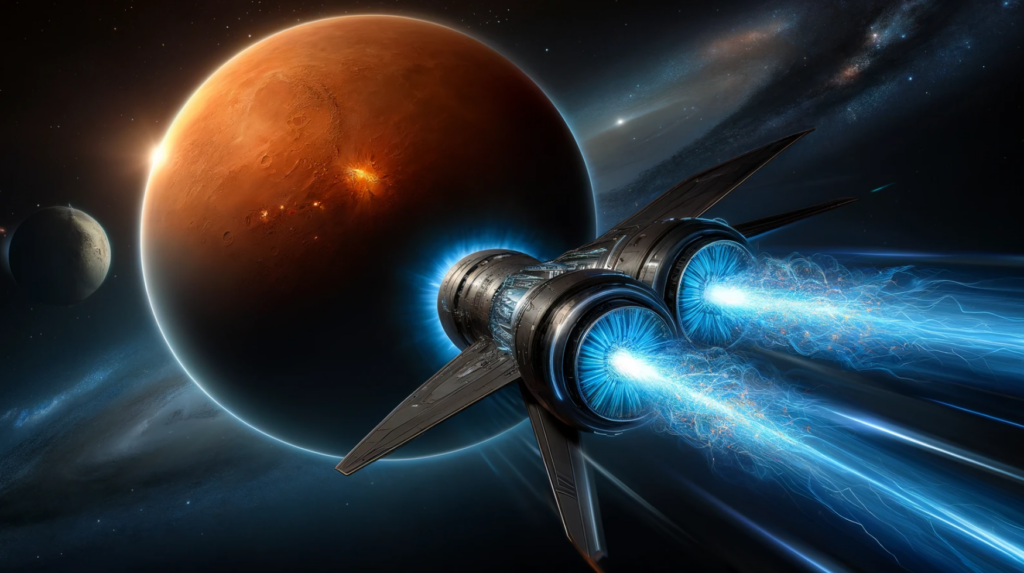NASA unveils a groundbreaking plasma propulsion system, developed under its NIAC program, that promises a Mars journey in merely two months—sharply reducing travel time from the traditional nine months.
In an extraordinary advancement in space travel, NASA is set to revolutionize how we reach Mars. The space agency has initiated the development of a new plasma rocket capable of reducing the travel time to the Red Planet to just two months, a significant improvement over the current nine-month journey. This propulsion system, which utilizes nuclear power to generate plasma bursts, is part of NASA’s Innovative Advanced Concepts (NIAC) program.
This initiative recently moved six futuristic projects to the second stage of funding and development. Among these, the pulsed plasma rocket stands out. Developed in collaboration with Arizona-based Howe Industries, this system employs nuclear fission to create high-energy plasma bursts that propel the spacecraft at unprecedented speeds.

The rocket, which offers a thrust capability of up to 22,481 pounds force (100,000 Newtons) and a specific impulse of 5,000 seconds, aims for exceptionally high fuel efficiency. This technology is not entirely new; it builds on NASA’s earlier Pulsed Fission-Fusion (PuFF) project, enhancing it with a simpler, more cost-effective design.
The advantages of this technology extend beyond speed. By significantly reducing the travel time, astronauts would be less exposed to harmful space radiation and microgravity, minimizing health risks. Additionally, the rocket’s capability to support heavier spacecraft means enhanced protection against cosmic rays for the crew onboard.
Phase 2 of the NIAC program is focused on further developing this technology, including detailed assessments of the spacecraft’s design and trajectory optimization. If successful, this pulsed plasma propulsion system could not only shorten our trips to Mars but also open new avenues for crewed space exploration.













